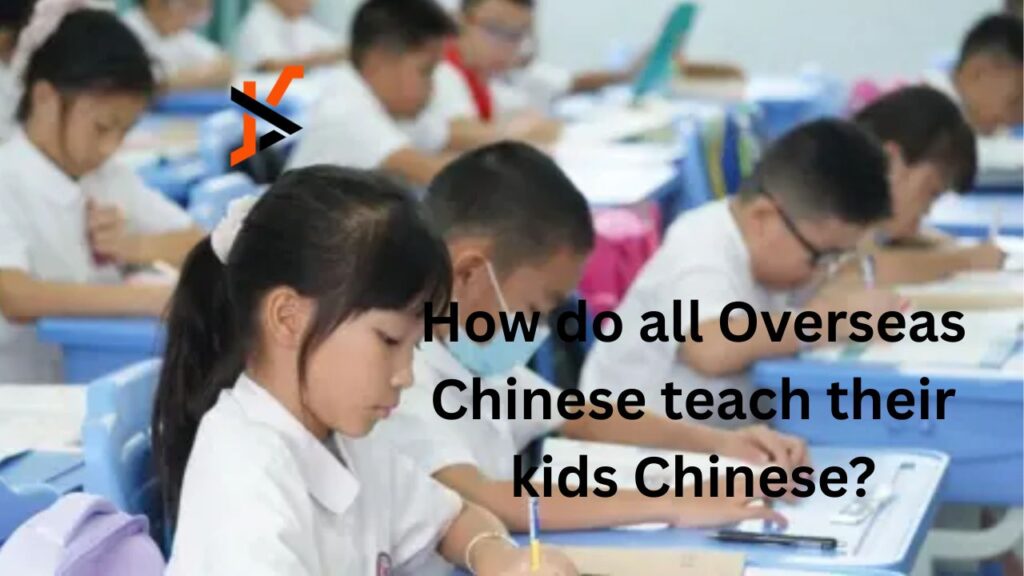| A computer and a love for Chinese culture are all it takes to help children speak their heritage language fluently, no matter where they live. |
Watching children effortlessly converse in English at school while struggling to form simple sentences in Chinese at home is a common frustration for many overseas Chinese families. The gap in cultural heritage, lack of a language environment, and scarcity of tailored learning resources often weaken their determination to pass on the Chinese language.“Many overseas Chinese parents are eager for their children to master Chinese, but the reality is that without ideal learning conditions, it’s hard for children to develop a genuine interest,” noted Vicky Wang, founder of Wukong Chinese, reflecting on her interactions with families in New Zealand.

01 The Multifaceted Challenges of Learning Chinese Overseas
The scarcity of high-quality, adaptive teaching resources remains a core issue in overseas Chinese education. Without localized teaching methods, suitable textbooks, or experienced instructors, children’s initial enthusiasm often turns into resistance.As China’s global influence grows, so does the demand for Chinese learning. By the end of 2020, over 180 countries and regions had incorporated Chinese into their education systems. However, overseas Chinese families have unique needs: they want their children not only to achieve daily communication skills but also to deeply understand Chinese culture and maintain ties to their heritage.Currently, 85 countries have integrated Chinese into their national education systems, with over 30 million people learning Chinese worldwide. Yet challenges like character recognition, tones, and grammar persist. For example, learners often struggle with Hanzi writing and phonetic accuracy. Similarly, syntactic differences (e.g., between Chinese and Japanese word order) and culturally rooted expressions (e.g., “一碗水端平”) add layers of difficulty.
02 Wukong Chinese’s Innovative Approach
To address these challenges, Wukong Chinese offers a fresh perspective. Founded in 2016 in New Zealand, Wukong Chinese combines Inquiry-based Learning (a pedagogy renowned in New Zealand) with structured Chinese language curricula. This approach prioritizes student engagement and practical application over rote memorization.Wukong’s team has developed a comprehensive curriculum spanning four core courses:
- International Chinese: Aligned with IB standards for global learners
- Advanced Chinese: For heritage learners with prior foundation
- Foundational Chinese: For non-heritage beginners
- Enlightenment Chinese: For preschoolers aged 3–4
Each course is supported by customized materials, including the “Wukong Baohe” learning kit—a set of textbooks, workbooks, and interactive tools designed to make learning tactile and fun. The platform also incorporates IP characters like “Little Wukong” and “Una the Rabbit” to create a relatable and immersive experience.
03 Technology-Enhanced Learning
Wukong Chinese leverages technology to overcome geographical barriers. Through its Wukong Class app, students access interactive homework, real-time feedback, and AI-driven exercises that adapt to their progress. The app supports multi-scenario immersion, allowing teachers and students to stay connected beyond the classroom.Key features include:
- Personalized learning plans: AI analyzes performance to tailor lessons
- Interactive assignments: Voice-based exercises and gamified reviews
- Live classroom tools: Digital whiteboards and breakout rooms for collaborative tasks
These innovations have helped Wukong achieve a 98% satisfaction rate, with two-thirds of new students enrolling through referrals.
04 Global “Chinese Fever” and Future Directions
The rise of Chinese learning is inseparable from China’s growing economic and cultural influence. For instance, the HSK exam sees an annual average increase of 20% in test-takers, exceeding 810,000 candidates in 2024.Wukong Chinese has capitalized on this trend by expanding its reach to 118 countries and cultivating a community of over 300,000 users. In 2024, the platform was recognized in the GSV 150 list for its impact on global education technology, further solidifying its role as an industry leader.Looking ahead, Wukong aims to deepen its integration of AI and big data to offer even more personalized learning pathways. As Vicky Wang notes, “As a industry leader, we have a responsibility to explore new possibilities for overseas Chinese education—so more people can marvel at the beauty of Chinese language and culture.”
Today, Wukong Education employs 4,000+ staff and teachers and serves families across 118 countries, maintaining leading market shares in the U.S., Canada, Australia, and New Zealand. For parents who once worried about their children’s connection to Chinese, the platform has transformed hesitation into confidence—one lesson at a time.

